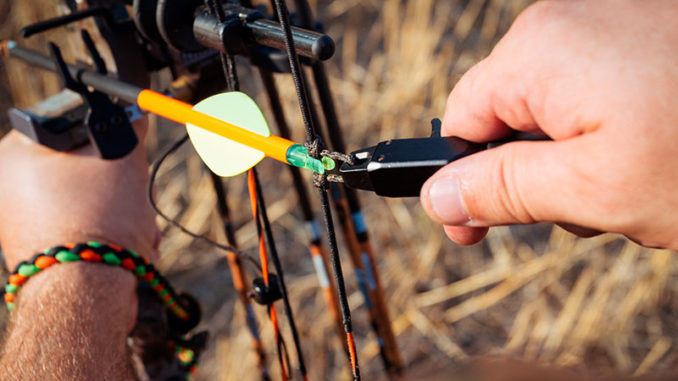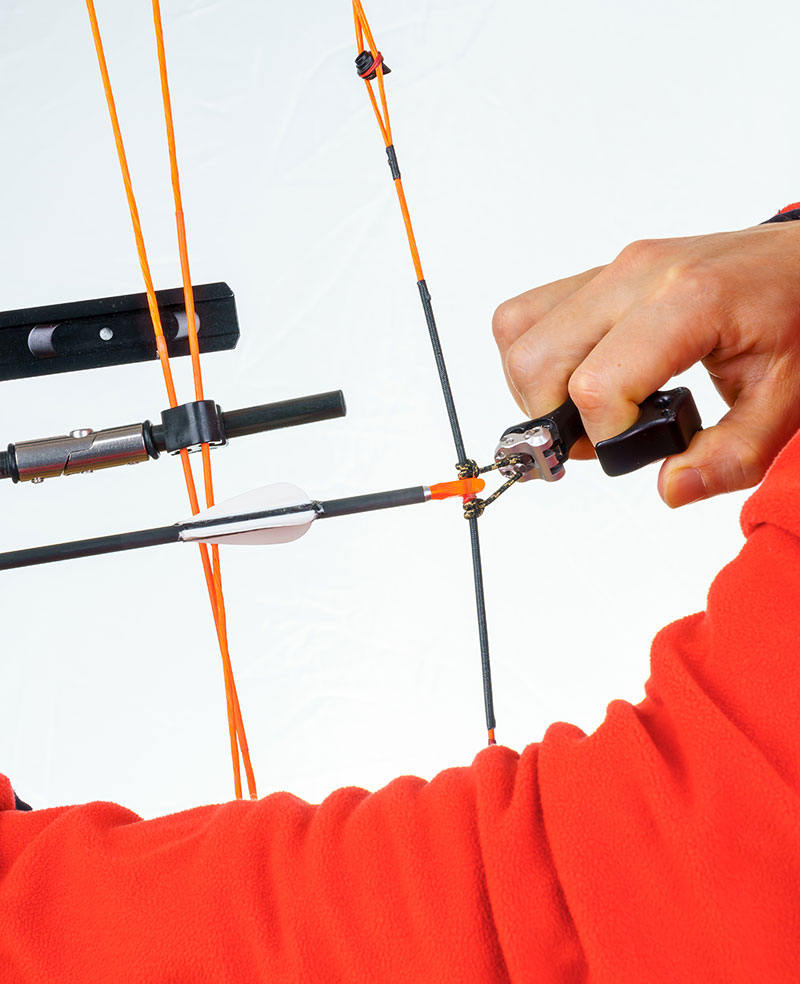
I killed my first buck in 1987 sitting on the limb of a big cedar tree, shooting a Ben Pearson 50-pound draw compound bow using a finger tab.
My gear and I have progressed, altered mostly by technology and my desire to become a better and more accurate archer.
Along that journey, I have experimented with every type of release aid on the market, before settling on one that I feel is the best for me.
Finger Release
The finger release is the most popular for hunters. This release aid usually has a strap that fastens around the wrist of the shooter and the calipers will grasp the “D” loop. It is released by a trigger pressed with the index finger of most archers.
The finger release comes in a variety of configurations and styles. Differences usually are situated in the mechanisms of the release itself. Shape of the trigger, size of the calipers, etc. They are affordable, and easily found. Prices range from as low as $10 up to around $75 for top-of-the-line finger release aids.
Thumb Release
The “T” shaped release aid is usually not affixed to the wrist, rather it has a handle that allows the shooter to use three or four fingers to grab the aid and pull the string back and is held there by these fingers. Pressure is then applied to a thumb trigger to release the arrow.
This is my personal favorite and one I moved to reluctantly. After getting used to the thumb trigger, my scores on targets rose by 30 percent. And in a hunting situation, the ability to affix the release to the bow and leave it there is a big advantage. With the thumb release hanging on the “D” loop, it is out of the way, and is always ready when I need to draw.
 Most top-end thumb release aids have micro adjustments, allowing the shooter to get just the right amount to help them make the most accurate shot possible. Thumb release aids cost $100 to $300 depending on brand and design.
Most top-end thumb release aids have micro adjustments, allowing the shooter to get just the right amount to help them make the most accurate shot possible. Thumb release aids cost $100 to $300 depending on brand and design.
Hinge Release
The last type of release aid is the hinge release. Some will refer to it as a ‘back-tension’ release, but this is a misnomer.
This release resembles a thumb release in design, but it is missing one of the key components and that is a trigger. Many have a faux trigger to allow a place for the thumb to reside while drawing and holding. The hinge release uses a hook to grab the string and when pulled by the archer, will ‘eventually’ release the arrow.
The hinge release is used by most top archers in the world. The reason behind the top archers using it is a matter of understanding how the brain works in archery and shooting in general. The human brain can concentrate on only one thing at a time. By using the hinge release, the archer is forced to focus on aiming and not on applying pressure to the trigger. By doing so, the archer continues to draw slowly backwards on the string while focusing on aiming. The arrow is released when it reaches the breaking point of the hinge.
These are also among the most expensive, beginning at around $200 and going up from there into the thousands.
Choosing the right release is as simple as giving each of these a try and seeing what works best for you. Comfort, accuracy, and cost all play a factor in making your decision. Always make accuracy the most important. Ethical hunters do not want to risk a wounded animal in the field.
Try, try again:
The best way to find which release works best for you is to try each type until you’ve found the one you’re most comfortable with, and are most accurate with.
The post “Find your best release” first appeared on CarolinaSportsman.com.


